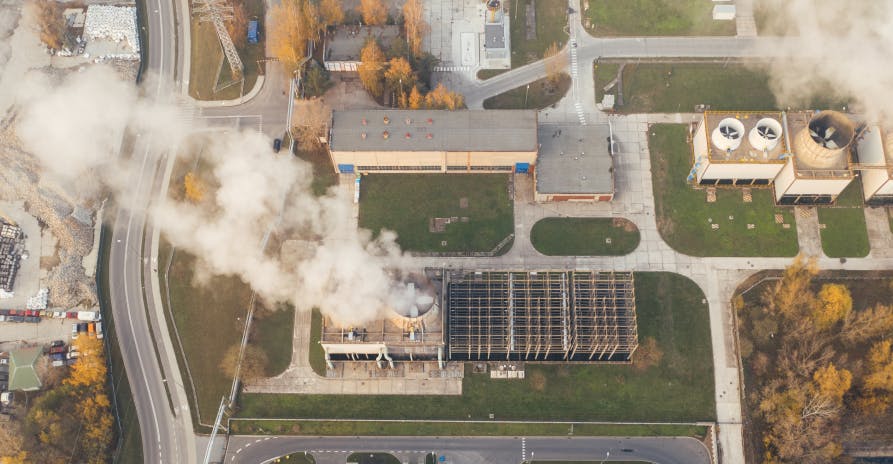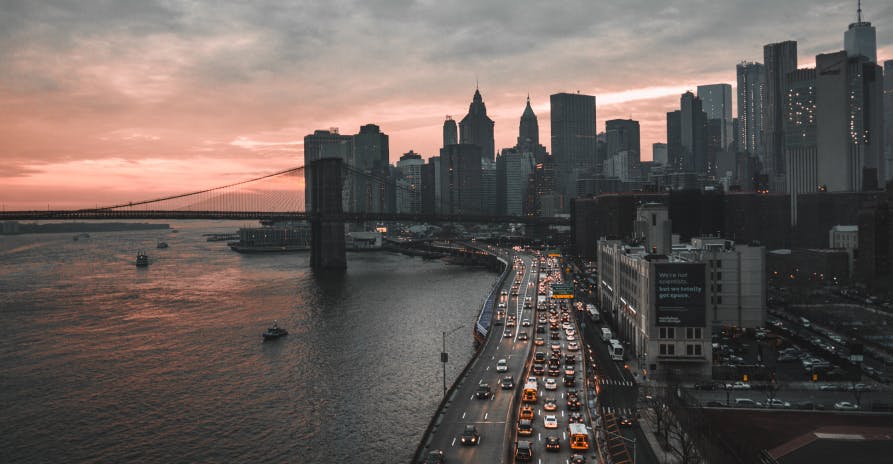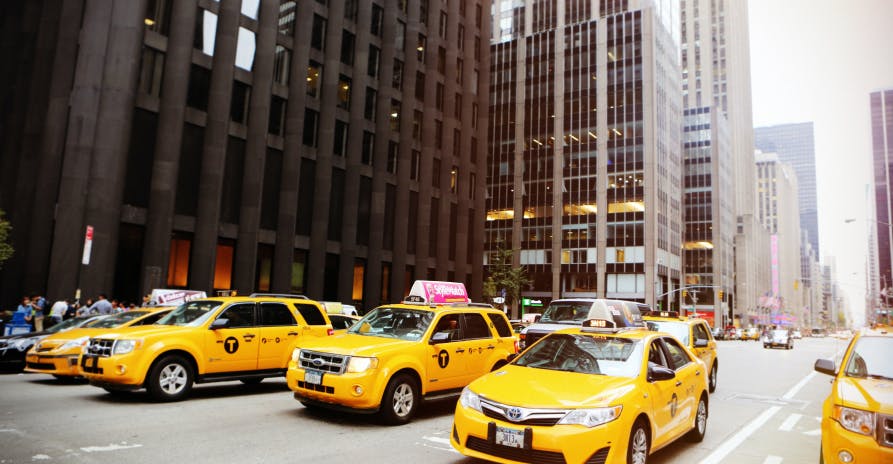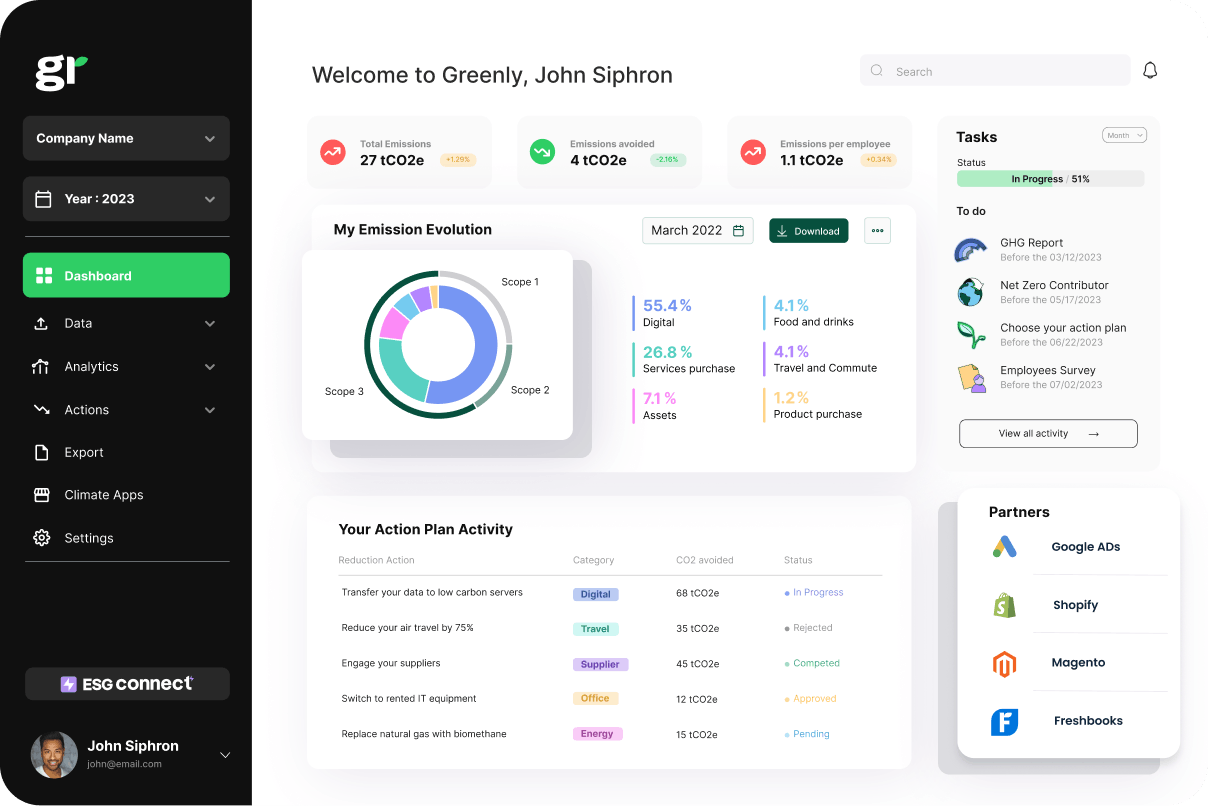
What are the 3 Pillars of Corporate Sustainability?
In this article, we'll explore what the 3 pillars of corporate responsibility are, why they're important, and how businesses can turn them into practical action.
ESG / CSR
Industries



Climate change has been impacting the U.S. more as global surface temperatures continue to rise, and while the Biden administration has demonstrated their dedication to environmental reform, some states have been implementing their own environmental legislation – one of those being the state of New York with the Climate Leadership and Community Protect Act.
Global greenhouse gas emissions are difficult enough to tackle on their own, which is why statewide greenhouse gas emissions reductions and efforts to mitigate greenhouse gas emissions are equally as important.
Starting small with greenhouse gas emissions limits within a state or region, such as with New York State Climate Leadership, can help to encourage other states to set greenhouse gas emission limits .
👉 What is the Climate Leadership and Community Protect Act, also known as CLCPA, and how will it help the state of New York to meet their greenhouse gas emission reduction goals?
The Climate Leadership and Community Protection Act, also known as CLCPA, is an act that helps to put the environmental measures necessary in place for New York to transition to the use of clean energy.
💡 Ultimately, the Climate Leadership and Community Protection Act works to reduce pollution that prevents society, the economy, and the environment from prospering as it should. The Climate Leadership and Community Protection Act was signed into law in July 2019 by Andrew Cuomo, who served as the previous governor for the state of New York – most notably during the Covid-19 pandemic.
Currently, the state of New York remains determined to reduce their greenhouse gas emissions from various sources by a whopping 85% down to the emission levels found back in 1990 before the year 2050 – reaching to accomplish 40% of this goal by 2030, leaving less than a decade for New York to make stringent cuts in high carbon activity.
This is set to be accomplished through the help of the Climate Leadership and Community Protection Act, as CLCPA will also encourage the use of renewable energy. In addition to reducing emissions, the Climate Leadership and Community Protection Act is dedicated towards the transition to clean energy – aiming to use 70% of renewable energy by 2030.
👉 If the Climate Leadership and Community Protection Act is successfully established, it could help the state of New York take big strides towards their emission reduction goals – becoming more important than ever as climate change continues to threaten the well-being of humans and the planet.

There are several goals in mind with the implementation of the Climate Leadership and Community Protection Act. In short, the most important goals of the legislation are depicted in the name of the act: to cultivate a greater responsibility in taking climate action while ensuring the safety of the surrounding community in the midst of climate change.
New York is known to be a state that other states in the country look to for guidance, as the state has gone against the grain and proposed several pieces of their own legislation before. Therefore, one of the goals of the Climate Leadership and Community Protection Act is to encourage other states across the nation to develop their own climate change legislation and convey the importance of fighting against climate change to others.
👉 Tackling the use of methane and the traditional ways that many New Yorkers use energy to cook and heat their homes is also going to remain a primary goal of the CLCPA.
In addition to being a role model for other states in the U.S. hesitant to make the shift to a clean energy society or propose emission reduction plans, the Climate Leadership and Community Protection Act also aims to avoid the use of fossil fuels creating excessive greenhouse gasses, transition to the use of clean energy such as by implementing wind turbines and solar panels, and create a healthier and safer environments for New Yorkers.
Climate change not only affects the planet, but the human species too – as increased natural disasters leave residences vulnerable to immediate destruction, and air pollution compromises air quality and results in health complications.
The Climate Leadership and Community Protection Act helps to set an example to other states who often look to New York as inspiration and be a leader in the movement towards the transition to the use of clean energy and emission reductions.
💡 Ultimately, the Climate Leadership and Community Protection Act can help encourage other states to fight against climate change and help the country meet their emission reduction targets, which have been adjusted following the inauguration of the Biden administration.

👉 The overarching goal of the Climate Leadership and Community Protection Act is to reduce emissions and facilitate the transition to the use of clean energy.
How does the state of New York expect the Climate Leadership and Community Protection Act to help them achieve their climate goals in a timely manner?
After being passed in 2019 and having come into effect in 2020, the Climate Leadership and Community Protection Act released a timeline in order to ensure the success of the CLCPA. By the end of 2020, the Climate Leadership and Community Protection Act was expected to increase energy efficiency by 23% in facilities across the state of New York.
In early 2021, the CLCPA wanted to have a deadline for creating a limit on greenhouse gas emissions and establishing necessary carbon taxes. By early 2022, the Climate Leadership and Community Protection Act encouraged the New York State Climate Action Council to create a scoping plan to provide a guideline in achieving emission reduction targets – and to submit this plan by 2023.
Houchul is still confident that the CLCPA will help to make a green economy without sacrificing the wallets of New Yorkers, and is determined to keep affordability as one of the key values in the CLCPA to ensure that the transition to the use of clean energy can remain a sustainable option in the long-run. In short, despite the backlash amongst some for setting New York to standards that may be difficult to meet, the CLCPA is set to remain as ambitious as currently planned.
👉 However, it is important to note that some of the changes that critics recommended were change may have also helped the CLCPA to be more successful in the long-term.
By early 2024, the Climate Leadership and Community Protection Act plans to collaborate with the Department of Environmental Conservation to establish new regulations to help New York meet their emission reductions. By the end of 2025, the CLCPA wants to have reduced 185 trillion Btu with the help of these new energy efficiency measures. At the end of 2030, the goal of the Climate Leadership and Community Protection Act is to have reduced emissions by 40% from baseline emissions in 1990.
💡 In 2035 and beyond, the CLCPA will expand on offshore wind, creating a clean electricity grid for residents of New York, and hopes to reduce 85% of emissions across the state by the end of 2050.
Clearly, the Climate Leadership and Community Protection Act set some ambitious goals for the state of New York to reduce greenhouse gas emissions – but has it proven successful?
| Year | Milestone |
|---|---|
| 2019 | The CLCPA was signed into law by Governor Andrew Cuomo, setting ambitious climate targets for New York State. |
| 2020 | Establishment of the Climate Action Council to develop a Scoping Plan to achieve the CLCPA goals. |
| 2021 | Release of the Draft Scoping Plan by the Climate Action Council for public comment and feedback. |
| 2022 | Finalization and adoption of the Scoping Plan by the Climate Action Council. |
| 2024 | Interim target: 6,000 MW of solar energy installed across New York State. |
| 2025 | Interim target: 70% of New York's electricity must come from renewable sources. |
| 2030 | Interim target: 40% reduction in greenhouse gas emissions from 1990 levels and 9,000 MW of offshore wind capacity installed. |
| 2035 | Interim target: 3,000 MW of energy storage capacity installed. |
| 2040 | Interim target: 100% zero-emission electricity sector. |
| 2050 | Final target: 85% reduction in greenhouse gas emissions from 1990 levels, with efforts to offset the remaining 15% through carbon capture and other methods. |

Given the Climate Leadership and Community Protection Act is only a couple of years old, it is hard to measure the success of the legislation thus far as statewide emissions reduction limits and voluntary emissions reduction measures can prove challenging to measure consistently.
👉 However, that being said, the act has already successfully recruited the help of other entities – and has most notably successfully proposed the New York State Climate Action Council Scoping Plan as previously planned in the Climate Leadership and Community Protection Act’s trajectory.
The New York State Climate Action Council Scoping Plan isn’t the only sign of future success for the Climate Leadership and Community Protection Act. In June, the New York State Energy Research and Development Authority, also known as NYSERDA, revealed they were researching the different methods that could be taken to achieve the 85% emission reductions set forth by the Climate Leadership and Community Protection Act before 2050.
This helped to provide the state of New York with pivotal data that could help to reach these emission reduction goals. Some of the data revealed includes the need to remove all carbon emissions currently being produced from the electricity industry, make a switch to the use of electric vehicles, mitigate the need for excessive and long-distance transportation, the need for alterations in central heating and cooling systems in order to improve energy efficiency, and to drastically cut the amount of fossil fuels still being used for industrial purposes.
👉 It is important to note that as of April 2023 – there are new concerns regarding the potential success of the CLCPA given Hochul refused to make amendments to the CLCPA, seeing as the current expectations for the CLCPA are set high.
If the Climate Leadership and Community Protection Act continues down this path of productivity, the success of the act could prove monumental in the role of emission reductions in the state of New York.
💡 Luckily, the Climate Leadership and Community Protection Act isn’t the only egg in New York’s basket when it comes to the fight against climate change – as they’ve proposed several other programs aimed to rectify the negative effects of global warming.

The Climate Leadership and Community Protection Act isn’t the first piece of environmental legislation to hit the New York governor's desk, but rather another request added onto a big pile of potential climate change regulations.
For instance, the Climate Leadership and Community Protection Act has successfully encouraged New York to propose their The New York State Climate Action Council Scoping Plan – which will act as a cap-and-invest program to help increase the financial resources needed to implement climate change reduction measures.
👉 The New York State Climate Action Council Scoping Plan will enlist the help of the Department of Environmental Conservation and the New York State Energy Research and Development to develop the most effective emission reduction program possible, while still keeping the safety of New Yorkers in mind.
Also, New York has become aware of the impact the fashion industry has had on climate change – having proposed their own pieces of legislation aimed at reducing the negative impact the fashion industry creates on the environment. One of those includes the Fashion Act, also known as the Fashion Sustainability and Social Accountability Act – would demand well-known fashion brands to improve their transparency on their environmental and social impact.
The Fashion Worker’s Act has also been proposed to the state of New York, which would help to provide models, stylists, social media influencers, and hair and makeup artists in the industry with fair working rights.
It’s clear that the state of New York is trying to make climate change a priority, especially with the Climate Leadership and Community Protection Act.
👉 Ultimately, if the Climate Leadership and Community Protection Act continues to be successful, it will not only reduce emissions and implement sustainable measures across the state – but encourage the rest of the country to implement environmental legislation that will do the same.
If reading this article about the Climate Leadership and Community Protection Act, or the CLCPA, has made you interested in reducing your carbon emissions to further fight against climate change – Greenly can help you!
The Climate Leadership and Community Protection Act, otherwise known as CLCPA, is just one of the many environmental regulations your company might have to comply with. Check out our legislation tracker here to see which rules your company has to adhere to.
Greenly can help you make an environmental change for the better, starting with a carbon footprint assessment to know how much carbon emissions your company produces.
